How to determine motor torque and speed requirements
The desired speed range may be difficult to achieve depending on the type of application. In general, depending on motor size and load type, very wide ranges may require a special motor. Operation at very low speeds, requiring the motor… Read more
Mar 29, 2013 | By Edvard Csanyi
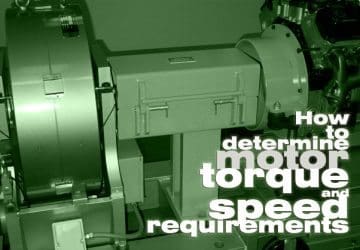
Induction motor startup and losses calculation
The main objectives while starting an induction motor are: To handle high-starting current To achieve high-starting torque. As we know, rotor resistance determines starting torque. Usually, this rotor resistance is small, giving small starting torque, but good running conditions. So, the squirrel-cage motor… Read more
Mar 25, 2013 | By Edvard Csanyi
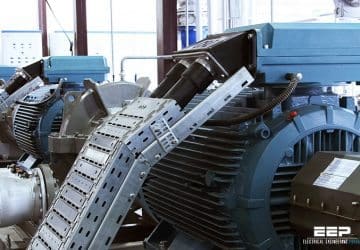
Starting Motor With Auto-transformer
An auto-transformer starter makes it possible to start squirrel-cage induction motors with reduced starting current, as the voltage across the motor is reduced during starting. In contrast to the star-delta connection, only three motor leads and terminals are required. On… Read more
Mar 18, 2013 | By Edvard Csanyi

Torque Of Three-Phase Induction Motor Explained
The rotating force that a motor develops is called torque. Due to the physical laws of inertia, where a body at rest tends to remain at rest, the amount of torque necessary to start a load (starting torque) is always much greater than… Read more
Mar 16, 2013 | By Edvard Csanyi
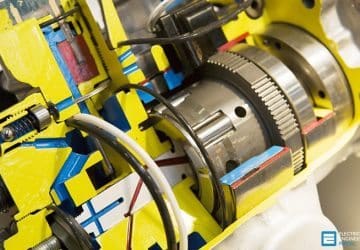
Direct Starting Of Squirrel-Cage Induction Motors
The direct starting (Direct On Line, DOL) is the simplest and most cost-efficient method of starting a motor. This is assuming that the power supply can easily deliver the high starting current and that the power transmission components and the working… Read more
Feb 16, 2013 | By Edvard Csanyi

How Motor Really Works?
The basic working of a motor is based on the fact that when ‘a current carrying conductor is placed in a magnetic field, it experiences a force’. If you take a simple DC motor, it has a current-carrying coil supported… Read more
Feb 08, 2013 | By Edvard Csanyi

PLC Application For Speed Control of AC Motors With Variable Speed (VS) Drive
A common PLC application is the speed control of AC motors with variable speed (VS) drives. The diagram in Figure 1 shows an operator station used to manually control a VS drive. The programmable controller implementation of this station will… Read more
Dec 29, 2012 | By Edvard Csanyi

Classes, Speed Control and Starting of DC motors
D.C. motors are divided into three classes, as follows: series-wound motor, shunt-wound motor and compound-wound motor. Let’s take a word about each of motor class. In this type (Figure 1) the field is in series with the armature. This type… Read more
Dec 04, 2012 | By Edvard Csanyi
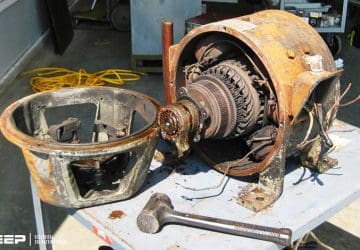
Stator Overheating Protection
All motors need protection against overheating resulting from overload, stalled rotor, or unbalanced stator currents. For complete protection, three-phase motors should have an overload element in each phase. This is because an open circuit in the supply to the power… Read more
Nov 19, 2012 | By Edvard Csanyi
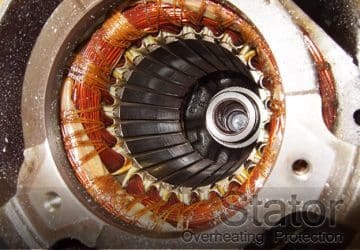
Few Words About Synchronous Machines
There are two main types of synchronous machine: cylindrical rotor and salient pole. In general, the former is confined to 2 and 4 pole turbine generators, while salient pole types are built with 4 poles upwards and include most classes… Read more
Nov 06, 2012 | By Edvard Csanyi

Motors for Hazardous Areas
Electrical drives/motors that are operated in hazardous areas must be built and engineered so that they cannot become an ignition source. This applies not only to normal operating and starting, but also in case of faults, for example at stalled rotor. The… Read more
Nov 02, 2012 | By Edvard Csanyi

Industrial Applications of Brushless Servomotor
A synchronous machine with permanent magnets on the rotor is the heart of the modern brushless servomotor drive. The motor stays in synchronism with the frequency of supply, though there is a limit to the maximum torque which can be… Read more
Oct 26, 2012 | By Edvard Csanyi

Few Words About Three-Phase Alternator
The three-phase alternator, as the name implies, has three single-phase windings spaced such that the voltage induced in any one phase is displaced by 120º from the other two. A schematic diagram of a three-phase stator showing all the coils… Read more
Oct 20, 2012 | By Edvard Csanyi

LT / Medium / HT VFD Used In the Industry (part 2)
Consider the application of a drive to a cane milling unit where the speed is to be variable from full to half rated speed. The drive is to be capable of producing full rated torque over the entire speed range…. Read more
Sep 11, 2012 | By sprabakar22
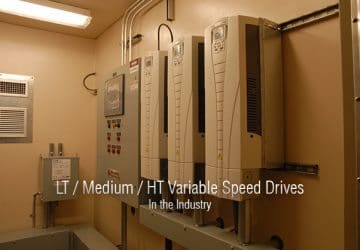
LT / Medium / HT VFD Used In the Industry (1)
In modern plants, there are number of drives like Milling Plant Drive, Hydraulic Drive, DC Motor Drive and AC Motor Drive of adequate capacities are available. There is lot of scope for improving the overall efficiency and saving the energy… Read more
Sep 10, 2012 | By sprabakar22


